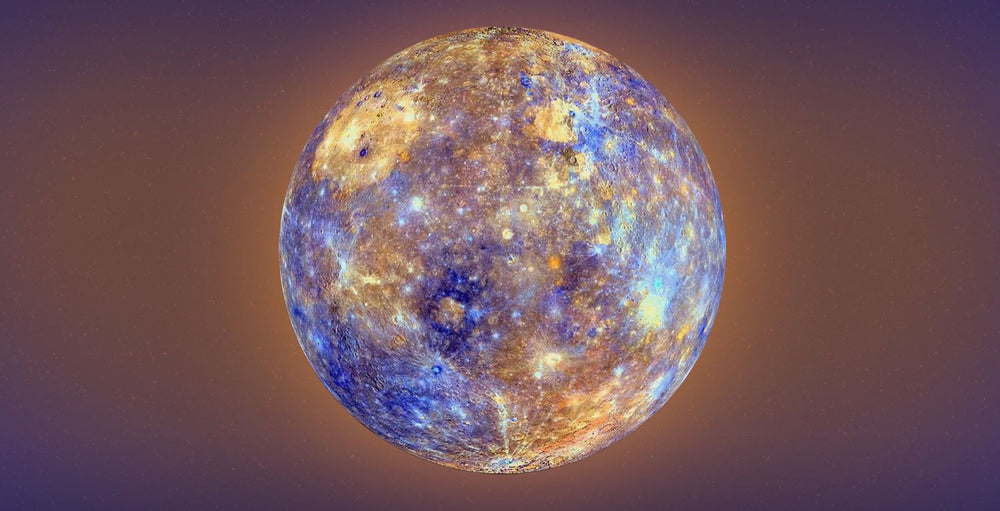How Many Moons Does Mercury Have
Mercury, the smallest planet in our solar system and the closest one to the sun, is a fascinating object to study in the field of astronomy. One of the questions that frequently arises in relation to Mercury is how many moons it has. In this article, we'll explore the answer to this question in-depth and provide a comprehensive overview of Mercury's unique characteristics.
Does Mercury Have Moons?
At first glance, it might seem like a simple question to answer: how many moons does Mercury have? However, the answer is not as straightforward as you might think. In fact, Mercury doesn't have any moons at all! This might seem surprising, as every other planet in our solar system has at least one moon. However, there are a few factors that make Mercury unique in this regard.
Why Mercury doesn't have moons
One of the primary reasons that Mercury doesn't have any moons is its proximity to the sun. Being so close to the sun means that the planet is subjected to a much stronger gravitational pull than other planets in our solar system. This makes it much more difficult for any moons to form or remain in stable orbits around the planet. Additionally, the fact that Mercury rotates very slowly on its axis (taking 59 Earth days to complete one rotation) also makes it more challenging for any moons to remain in orbit.
Other interesting facts about Mercury
While Mercury might not have any moons, there are still plenty of fascinating facts about this small planet to explore. For example, Mercury is the smallest planet in our solar system, with a diameter of just 3,032 miles (4,879 km). It's also the closest planet to the sun, with an average distance of just 36 million miles (58 million km). Despite its small size, Mercury has a surprisingly complex geological history, with evidence of volcanic activity and tectonic activity on its surface.
Exploring Mercury
Despite its challenges for supporting moons, Mercury is a popular target for exploration by astronomers and space agencies. In fact, NASA's MESSENGER spacecraft orbited Mercury from 2011 to 2015, providing us with a wealth of information about this mysterious planet. Scientists are still studying the data from the MESSENGER mission and continuing to learn more about Mercury's unique properties.
Mercury's surface features
As mentioned earlier, Mercury has a complex geological history, and its surface features are a testament to that. The planet is covered in impact craters, similar to the Moon, but it also has a number of unique features such as scarps (long cliffs) and smooth plains. The scarps are believed to have formed as the planet cooled and contracted, causing the crust to buckle and crack. The smooth plains, on the other hand, are thought to have been formed by volcanic activity.
The history of Mercury's discovery
Mercury has been known to humans since ancient times, and it was named after the Roman god Mercury, who was known for his speed and agility. However, the first detailed observations of the planet were made by the Italian astronomer Galileo Galilei in the early 17th century. Since then, scientists have continued to study and explore Mercury, uncovering new information about its properties and characteristics.
Mercury's orbit and rotation
As mentioned earlier, Mercury has a very short distance to the sun, which means that its orbit is very fast. It takes just 88 Earth days for Mercury to complete one orbit around the sun. Additionally, as also mentioned earlier, Mercury rotates very slowly on its axis. However, there's an interesting quirk to Mercury's rotation: it actually completes three rotations on its axis for every two orbits around the sun. This means that one day on Mercury (the time it takes for one rotation) is actually longer than one year (the time it takes for one orbit).
The search for possible moons around Mercury
While it's unlikely that Mercury has any moons, scientists have continued to search for evidence of any possible natural satellites around the planet. In recent years, there have been reports of potential sightings of small objects in orbit around Mercury, but these have yet to be confirmed. Additionally, there have been proposals to send spacecraft to Mercury to search for any potential moons, but as of yet, no such mission has been undertaken.
Conclusion
In conclusion, the question of how many moons Mercury has might not have a straightforward answer, but exploring the topic provides us with a wealth of information about this unique planet. From its lack of natural satellites to its complex surface features and unusual rotation we can expect to learn even more about its properties and characteristics, and who knows, we may even uncover evidence of potential moons in the future. Regardless, there's no denying that Mercury remains a captivating object of study in the field of astronomy, and we can look forward to many more exciting discoveries to come.
Read more about Mercury:
- Mercury Planet
- Mercury in Retrograde
- Facts about Mercury
- Mercury distance from the Sun
- Does mercury have clouds?
- How did Mercury get its name
- When was Mercury discovered?
- How long does it take mercury to orbit the Sun
- Mercury distance from the Sun
- Mass of Mercury
- What is Mercury made of
Read more about Planet Moons:
- How many moons does Uranus have?
- How many moons does Neptune have?
- How many moons does Jupiter have?
- How many moons does Mars have?
- How many moons does Venus have?
- How many moons does Saturn have?


